Today we are going to share the awesome work that PickASO -our brother- is doing with one of its clients: a case study that shows that App Store Optimization can increase your app’s performance even if it’s already a well-ranked one. Keep reading!
Table of Contents
ASO Case Study: How to Double Organic Visitors and Increase Installs by 50%
This case aims to show that App Store Optimization matters, and not only for new apps, but also for those which are already known and have millions of installs. The process we will talk about went from August to October, and it shows the app’s evolution in terms of keywords rankings and amount of installs in both Apple App Store and Google Play Store. It was released in 2012 for Google Play and in 2009 for App Store, under the categories House & Home and Productivity, respectively, and it already has more than 1,000,000 installs for each store. Its rating is 4.0 stars on App Store and 4.1 on Google Play Store.
Although it may seem that the app is doing fine by itself (it is a renowned brand in Spain), as we usually say, there’s always room for improvement. ASO helps all kind of apps and games, and that’s what we are going to see here today.
Before ASO implementation – App’s situation in August 2018
The first step followed was to break down the main elements of the app store listing (as of August 2018, before the implementation) to evaluate which ones are properly optimized and which ones would need improvement. The elements considered in this case study are both on-metadata factors, off-metadata factors, and user ratings and reviews.
On-metadata factors
In terms of App Name and Title, the app was using 25 characters, which is fine for the App Store (which allows a maximum of 30) but not enough for Google Play (max 50 characters). Being one of the most important fields for ASO, it’s necessary to make the most out of it. For the rest of the textual fields, the situation of both stores was the following:
- On the App Store:
- Subtitle: 29/30 characters, proper length but not enough keywords
- Promo field: Missing
- Description: 1,467/4,000 characters, less than half of the allowed
- Category Ranks: Utilities (9), General (114)
- On Google Play:
- Short Description: 80/80 characters
- Long Description: 1,528/4,000 characters, less than half of the allowed
- Category Ranks: House & Home (1), General (139)
Regarding the visual assets, Icon and screenshots could be improved design-wise to improve conversion rates, plus it uses 5 screenshots (out of 10 on the App Store and out of 8 on Google Play). It also doesn’t have a video preview on the Apple App Store, so there are several things that could be optimized.
Off-metadata factors
These are not under our control, but it’s important to keep track of them. The app has more than a million downloads on both stores, the average rating is 4.0 on App Store (although it has a 4,5 in the current version), with almost 22,000 ratings, and a 4,1 on Google Play, having approximately 78,000 ratings. All of them are solid numbers, but let’s dive a little deeper.
Reviews and ratings are also an important off-metadata factor, as they help the app to improve rankings for the keywords used there. Reviews were also analyzed, divided by sentiment (positive, neutral or negative). On the one hand, on the App Store, this app had almost 1,400 reviews, from which 46% were positive, 7% neutral and 47% negative. According to the top 10 keywords used in reviews, six of them were negative due to bugs and errors, compared to previous versions. On the other hand, on Google Play there are over 15,000 reviews, from which 67% are positive, 11% neutral and 23% negative. Reviews are the best way of getting feedback for your app, so that way it is possible to see if it has bugs or if users are enjoying it, or not.
At that point, we could see that the iOS version of the app had some errors that needed to be fixed, and that’s the reason it got more negative reviews than on Google Play. If we neglect users’ feedback, it can translate into bad ratings, so it’s important to keep working on user feedback strategies.
ASO on-metadata suggestions
The app was already ranking positively for most of the keywords that have been worked with, so the goal was to rank even better to be ahead of its competitors. There should be core keywords in all the textual fields, and also those which high traffic volume, along with mid-tail and long-tail combination of keywords.
After the analysis, a proposal of 85 keywords to include in the main textual fields of the app listing was made by using TheTool. They were selected based on search volume, difficulty and the possibility to generate organic traffic and downloads. They were divided into three categories:
- Core business keywords, or those that are interesting to rank for because of business reasons.
- Competitors’ keywords, or those that the competition is already using, so it would be interesting to aim to rank for them as well.
- Brand keywords, or those related to the brand.

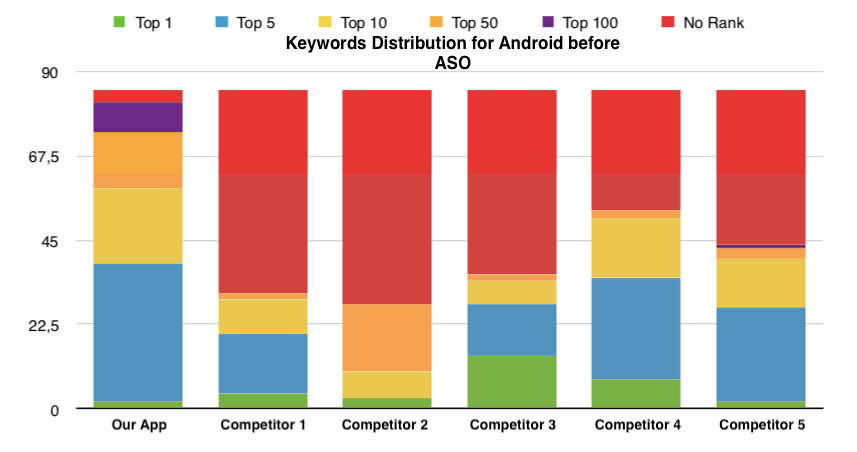
Regarding the specific changes, we’ll break it down to those concerning Apple App Store first, and Google Play Store after that.
Apple App Store ASO suggestions
The App Name is remaining the same, as it is using almost all the length allowed, plus significant keywords. The only change made in this field was the use of uppercase letters to stand out. The Subtitle was changed in order to include more core keywords, as it is an important field and it should include keywords that describe clearly the app’s functionality.
The Description isn’t relevant for search, but it should be fully optimized to improve conversion rate. It needs to describe its main functionalities and advantages to try to convince users to download the app. There are now 3,579 characters used out of 4,000, improving from the 1,467 that were used before.
The Keywords Field is relevant for ASO search, so 100/100 characters with the most interesting core business keywords was implemented, taking into account their traffic, difficulty to rank for those keywords, competitors and combinations that generate other interesting keywords.
The Promo Text is a useful field that can be changed at any time, and it is used to share events, offers or new features. In this case, it was changed so as to be more appealing to users, thanks to promotions and discounts.
Another interesting matter that doesn’t affect the keywords rankings themselves, but it’s worth working on is the category of the app. It is key to choose a proper category, as users tend to browse through Top Charts rankings. There was a change of category in that app, moving from Utilities (although it was kept as a secondary category) to Productivity.
Regarding visual assets, it is recommended to perform A/B testing on the icon in order to see which version has a better conversion rate to download. Screenshots are also an important factor that convinces users to download the app. At that moment there were only 5 screenshots in the gallery out of 10 possibles, so ideally the client should take advantage of it to include more screenshots, and also try to connect them using storytelling or customer journey. Last but not least, there’s the possibility to include up to three videos that play themselves automatically. There weren’t any videos in the product page, so there should be at least one video that shows functionalities and advantages of the app.
Google Play Store ASO suggestions
As we mentioned before, the Title of this app was only using 25 out of 50 characters, so the new Title suggested includes more keywords in order to make the most out of it.
Read more | How to Optimize Google Play Title
As there’s not a Keywords Field in Google Play Store, the Title, Short Description and Long Description need to include core keywords. It also should be written in a way that makes it appealing to the user, describing all functionalities easily and clearly. Although there are studies that say that almost no one reads Google Play descriptions…
Short Description used all the characters allowed, but the new suggestion includes more relevant keywords and emojis to improve conversion rate. The Long Description also went from 1,528 characters used to 3,811, which makes the most out of the 4,000 characters maximum allowed.
Regarding the visual assets, the strategy to follow was the same that was used on Apple App Store: A/B testing on the icon to see if another version would perform better and optimizing the screenshot gallery in order to include more images and also to improve its current design.
ASO off-metadata suggestions
Off-metadata factors are not in our control at 100%, but there are some things we can do in order to improve them, which will translate into an improvement in terms of visibility and downloads.
Ratings and reviews from users are some of the most important off-metadata factors, as they affect ranking algorithms and conversion rate. By working on the product, good ratings should come naturally, and there’s always the possibility to use SDKs to encourage users to rate the app without leaving it. In terms of reviews, they are a useful source of information to detect bugs and receive feedback from users, who usually have ideas that could be included in further updates. It’s key to manage reviews the best way possible, as they increase user’s sentiment towards the app.
After ASO implementation – App’s situation in October 2018
All the suggestions made above were implemented at the beginning of September, so let’s check the evolution of the keywords selected for both stores.
Apple App Store ASO results
As we can see in the graph below, ASO implementation made this app rank for the double of keywords, getting lots of top 1 and top 5 keywords, to the point that 80 out of 85 keywords implemented are currently ranking in those positions.
Thanks to this keyword research and its implementation, the number of impressions and downloads from Search have increased significantly:
Google Play Store ASO results
On Google Play the impact of the keywords selected wasn’t as big as with Apple App Store, but that’s because the app was already ranking high for a lot of keywords. However, its implementation translated into an increase of keywords ranking for top 1 (yellow) and top 5 (light blue), as you can check in the graph below:
In terms of KPIs, something peculiar happened: the total number of listing visitors decreased by 18%, but the number of organic visitors was almost doubled. It also got 47% more installs!
Wrapping it Up – How to Double Organic Visitors and Increase Installs by 50%
In conclusion, this case study reflects that all kind of apps can be optimized, even those that are already known brands which have good ASO. As we always say, App Store Optimization is a never-ending process and there’s always room for improvement. Here’s a general overview of what was achieved thanks to the strategy:
Lastly, we’d like to congratulate our colleagues from PickASO for such an amazing job! Kudos! 👏
Do you have any ASO case study you’d like to share with us? Tell us in the comments.
And as usual, sharing is caring! 🙂
View more ASO case studies, but we recommend this one.






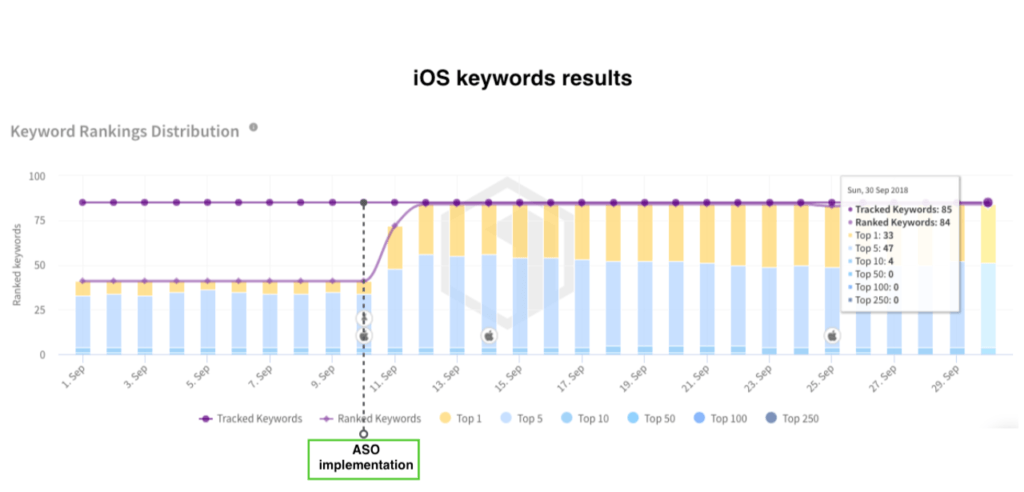
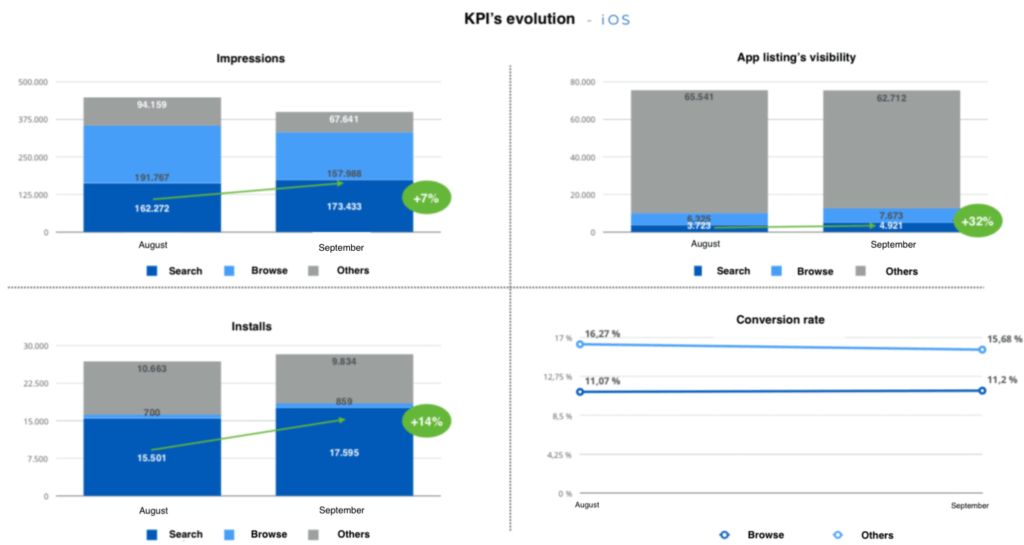


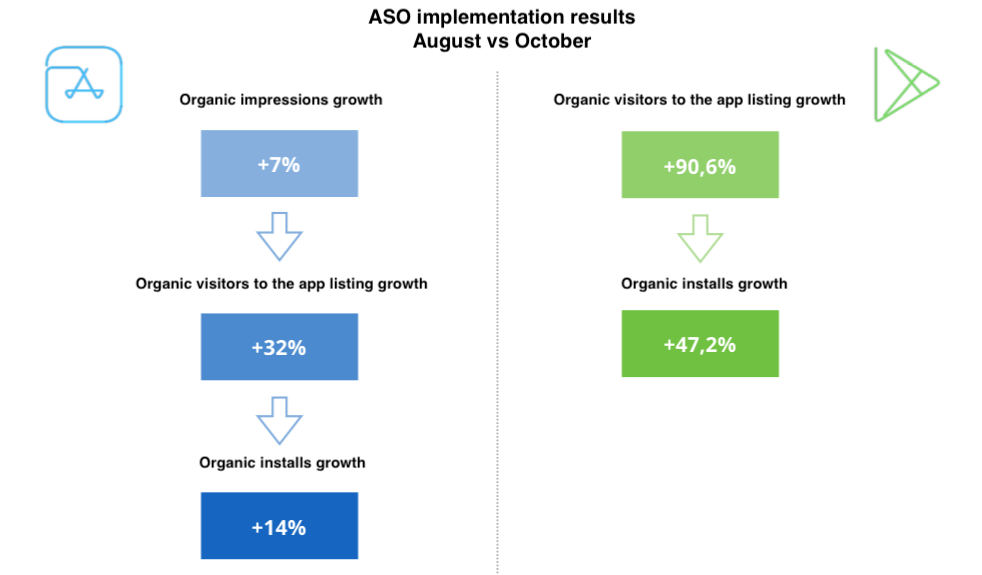

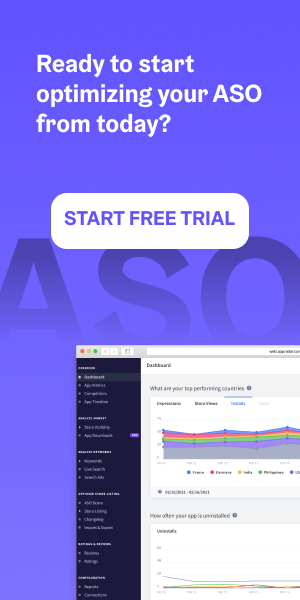
2 thoughts on “ASO Case Study: How A Renowned App Doubled Organic Visitors and Increased Installs by 50%”
Great case study, thanks for sharing. You wrote: “and there’s always the possibility to use SDKs to encourage users to rate the app without leaving it.”. – do you have any recommendations?
Cheers
Any Recommendation on SDK s for review improvement?